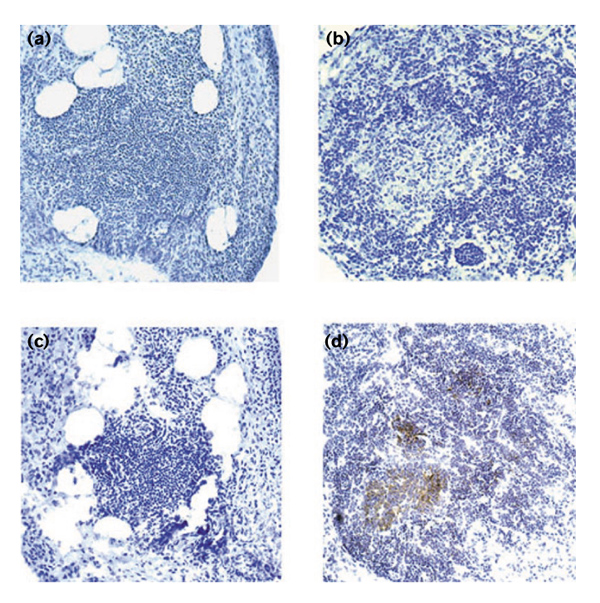Figure 1.

The formation of lymphoid microstructures by T cells and B cells in rheumatoid synovitis. T cells and B cells infiltrating the synovial membrane are arranged into highly organized structures. Synovial lymphoid microstructures include two mutually exclusive types of T-cell–B-cell clusters, those lacking GCs (a, c) and follicles with central GCs (b, d). In both microstructures, T cells and B cells are mixed in a well-maintained ratio. Centroblasts and centrocytes in the follicular sample indicate a GC reaction that is missing from the aggregate sample. The stain in (a) and (b) was hematoxylin. CD23-expressing FDC networks were detected by immunoperoxidase technique with 3',3'-diaminobenzidine tetrahydrochloride substrate (c, d). Centers of follicles with GCs were occupied by FDC networks, reminiscent of typical secondary follicles in lymph nodes. No FDCs were identified in T-cell–B-cell aggregates that lacked GCs. It is not known whether synovial T-cell–B-cell aggregates resemble structures represented in secondary lymphoid tissues.
